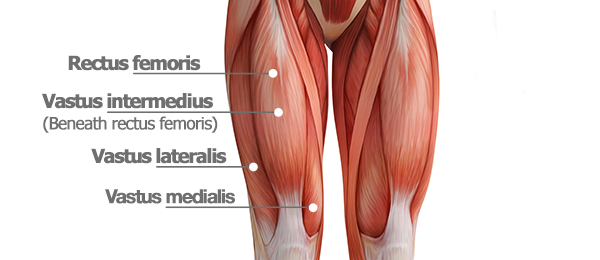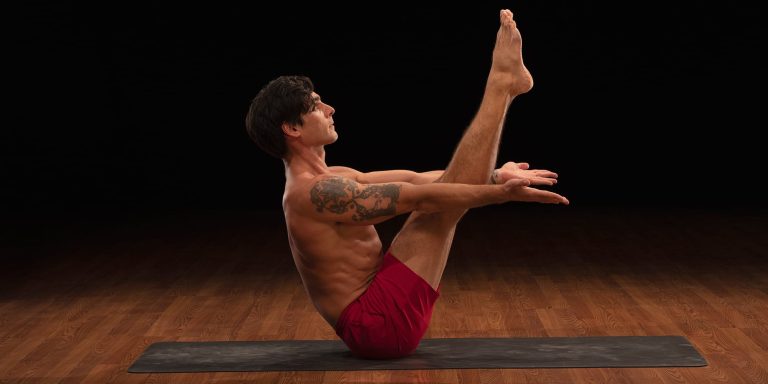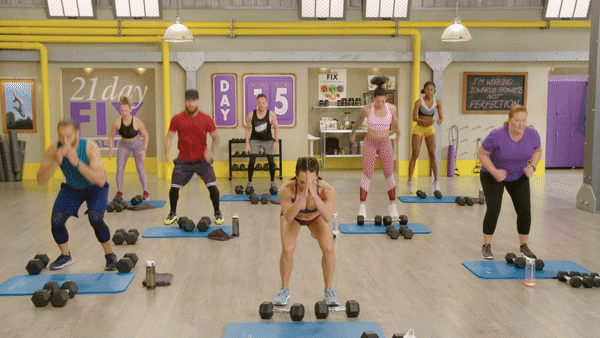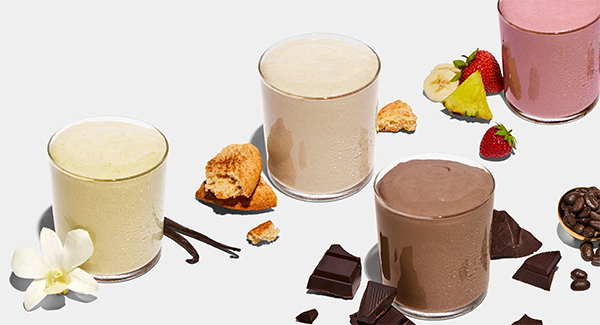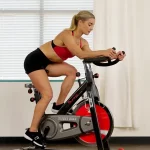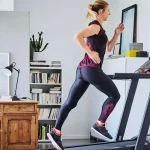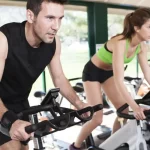Houston, TX 77099
8. Lateral Lunges
Products are available — click below to view them!
SEE DETAILSAppears in: 22 Minute Hard Corps – Resistance 2
Benefits: Lateral lunges target the inner and outer thighs, glutes, and hamstrings while also improving hip mobility and stability.
- Start standing with your feet hip-width apart.
- Take a wide step to the right, bending your right knee and pushing your hips back as you lower into a lunge position.
- Keep your left leg straight and your torso upright.
- Push off your right foot to return to the starting position.
- Repeat on the left side.
Appears in: LIIFT MORE – Week 1/Day 4: Hamstrings & Glutes
Benefits: Lateral band walks are a great way to activate and strengthen the glutes, hips, and thighs, helping with overall lower body stability and strength.
- Place a resistance band around your thighs, just above your knees.
- Start in a quarter-squat position with your feet hip-width apart.
- Step to the side with your right foot, then follow with your left foot to return to the starting position.
- Continue stepping side to side, maintaining tension on the band throughout the movement.
Side Lunge
Appears in: SHIFT SHOP – Strength: 25
Benefits: With a focus on the adductors (inner thighs) and abductors (outer thighs and hips), this move helps strengthen your entire lower body.
- Stand upright with your feet hip-width apart, holding a pair of dumbbells at your sides. This is the starting position.
- Keeping your feet parallel and your core tight, take a large step to your right with your right foot.
- Keeping your left leg straight, chest up, and back flat, lower the dumbbells to either side of your right leg as you bend your right knee and lower your body until your right thigh is parallel to the floor.
- Reverse the movement to return to the starting position.
- Do equal reps on both sides.
9. Calf Raise Bridge
Appears in: Clean Week – Strength
Benefits: This seemingly simple weighted move is great for targeting the glutes, hamstrings, and calves.
- Lie on your back with your legs bent and your feet flat on the floor about hip-width apart, holding a pair of dumbbells on your hips. This is the starting position.
- Lift your hips as high as possible, squeezing your glutes as you rise up on the balls of your feet.
- Reverse the movement to return to the starting position.
10. Chopper Lunge
Appears in: 22 Minute Hard Corps – Resistance 1
Benefits: Not only are you developing your quads and glutes with this move, you’re also stretching and extending the hip flexors and challenging your core as you swing your arms to each side.
- Stand with your feet shoulder-width apart, feet parallel, holding a dumbbell (or a sandbag), with both hands in front of your chest. This is the starting position.
- Step your right leg backward into a lunge, simultaneously lowering your right knee until it’s close to (but not touching) the ground and lowering the weight to the outside of your left (forward) thigh as if paddling a canoe.
- Return to the starting position and repeat, this time stepping back with your left leg and lowering the weight to the outside of your right thigh.
- Continue alternating legs.
11. Pistol Squat
Appears in: The Master’s Hammer and Chisel – Chisel Balance (referred to as the “Leg Squat Sit”)
Benefits: This move is a true test of balance, coordination, and control in your lower body.
- Stand in front of a stable, knee-high platform (like a bench or box) facing away from it, holding one dumbbell with both hands in front of your chest.
- Extend your right leg straight in front of you with your toes up and heel a few inches off the floor.
- Keeping your chest up, push your hips back and lower your butt onto the bench.
- Return to the starting position without letting your right foot touch the floor.
- Do equal reps on both legs.
12. Holmsen Screamer Lunge
Appears in: P90X3 – Decelerator
Benefits: This explosive bodyweight move builds explosive lower-body power and vertical jumping ability while developing the quads, glutes, calves, and hamstrings.
- Step back into a reverse lunge with your right leg, toes pointed forward, left foot flat, ball of your right foot on the floor. Your right arm should be forward and your left arm back. This is the starting position.
- Drive your right knee up and forward explosively, jumping into the air as high as possible while keeping your left leg straight and switching the position of your arms, so that your left arm is now forward.
- Land softly on your left leg and return to the starting position.
- Do equal reps on both sides.
13. Loaded Curtsey Lunge
Appears in: SHIFT SHOP – Super Strength: 50 (referred to as the “Double Cross”)
Benefits: Working your upper and lower body, this move hits your hips, glutes, quads, core, and shoulders.
- Stand upright, feet hip-width apart, holding a sandbag or dumbbell in both hands above your right shoulder. This is the starting position.
- Step back with your right foot, crossing it behind your left leg as you simultaneously lower your body as far as you can toward the ground and the weight across your body to the outside of your left leg.
- Return to the starting position, and repeat.
- Do equal reps on both sides.
14. Plyo Frog Squats
Appears in: P90X2 – Base + Back
Benefits: This move can boost power in your hips and thighs while helping improve hip mobility.
- Stand with your feet slightly wider than shoulder-distance apart, feet turned out.
- Keeping your chest up and your lower back flat, push your hips back to squat down as low as possible, touching the floor between your feet with your fingertips if you can.
- Swing your arms forward and up as you jump as high as possible.
- Land softly, and immediately drop back down into the squat to begin your next rep.
15. Split Lunge Thrust
Appears in: 22 Minute Hard Corps – Resistance 3
Benefits: This weighted plyometric exercise improves explosive power as it boosts mobility and builds strength in the quads, glutes, and calves.
- Hold a pair of dumbbells at shoulder height in each hand with your elbows tucked.
- Step back with your right leg into a lunge position (knees bent at 90 degree angles, front foot flat on the floor), and then jump up explosively, pressing the weights overhead as you switch leg positions in the air to land with your right leg forward.
- Immediately drop down into a lunge position to begin your next rep.
- Continue alternating legs each rep.
Leg Muscle Anatomy
The lower body is an anatomy student’s nightmare. Full of oddly named muscles like the gracilis and the sartorius, the legs can look like an indistinguishable hodgepodge of tissue to the uninitiated.
Boiling leg anatomy down to the basics, the biggest players are the quadriceps, hamstrings, adductors, and calf muscles. Here’s how those heavy hitters help you strut your stuff:
Quadriceps
Your quads are comprised of four individual muscles on the front of your thighs. Their main job is to extend your knee — which makes them essential in movements like running, jumping, and kicking.
In the gym, your quads light up whenever you squat, lunge, or step upward.
Hamstrings
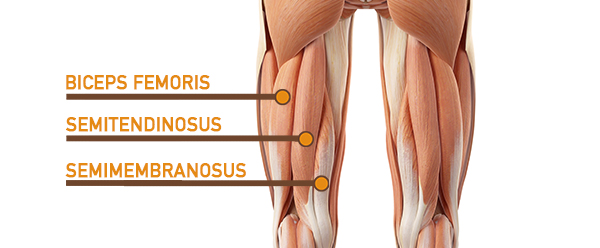
These muscles on the back of your thighs — the biceps femoris, semitendinosus, and semimembranosus — flex your knee, helping you curl your heel toward your butt. They also help with the rotation of your lower leg and assist your glutes in extending your hips to move your thigh backward.
Calf Muscles
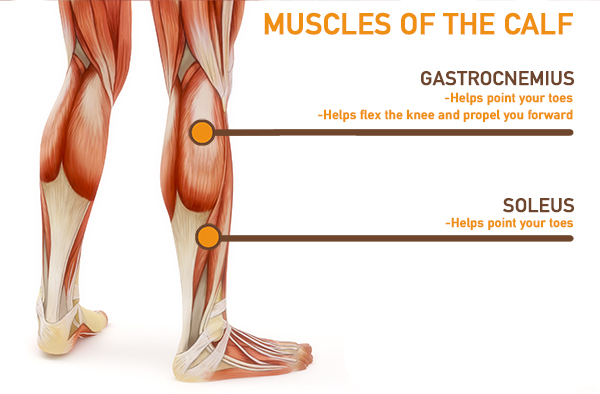
Two muscles in your lower legs are responsible for pointing your foot (extending it downward). The gastrocnemius is on top, closer to the back of your knee, and it points your foot when your leg is straight; the soleus lies beneath it and points your foot when your knee is bent.
Another muscle, the tibialis anterior, lies alongside your shin in the front of your lower leg, and it’s responsible for flexing your foot (pulling the toes up toward the shins).
Adductors
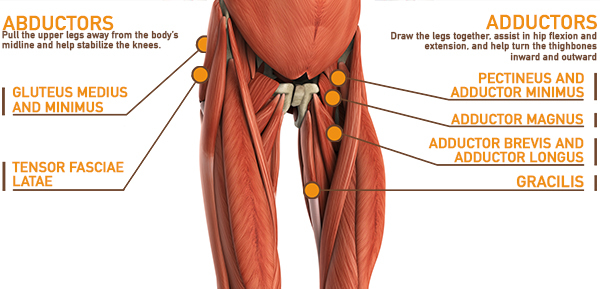
This set of about a half-dozen muscles on your inner thighs — the most powerful of which are the longus, magnus, and brevis — are responsible for pulling your thighs together and providing stability during big-ticket moves like squats, lunges, and sprints.
What about the glutes?
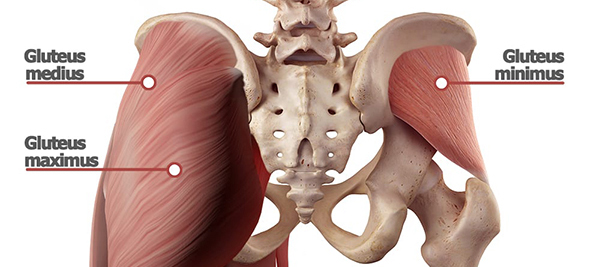
Colloquially, your butt; technically, the gluteus maximus, medius, and minimus. The glutes aren’t actually part of your legs — they are part of your hip.
Nevertheless, they’re responsible for some of your lower body’s most fundamental movements. Primarily, they extend the hips (a critical part of rising out of a squat or a seated position), move the legs away from the body, and rotate the legs outward.
As you can see, keeping up with your legs’ demands as you push the limits of their strength and stamina will leave your heart pounding, your lungs heaving, and your body’s sprinkler system in high gear — as long as you do it correctly.
Is it any wonder that so many people skip leg day?
This is some content that needs to be rewritten

